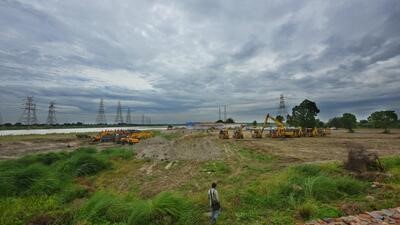
Floodplain

26.02.2024
Floodplain , Daily Current Affairs , RACE IAS : Best IAS Coaching in Lucknow
|
For Prelims: About Floodplain, Parts Of Floodplain, How do floodplains form?, Importance |
Why in the news?
The high-level committee for Yamuna’s rejuvenation has set a target for the floodplain’s demarcation.
About Floodplain:
- A floodplain is a generally flat area of land next to a river or stream.
- It is composed of unconsolidated sedimentary deposits (alluvium) and is subject to periodic inundation by the stream.
- It stretches from the banks of the river to the outer edges of the valley.
- A floodplain consists of two parts.
○The first is the main channel of the river itself, called the floodway. Floodways can sometimes be seasonal, meaning the channel is dry for part of the year.
○Beyond the floodway is the flood fringe. It is the land between the banks of the floodway and the valley wall, or anywhere the valley land starts to rise.
How do floodplains form?
- Floodplains develop in two common ways: erosion and deposition (also known as aggradations).
- When rivers start to meander, curving from side to side, the water erodes the banks of the river and creates a wide, flat area around the sides.
- When the river floods, either because of heavy rainfall or ice melting upstream, it floods its banks.
- The water that moves out of the floodway and into the fringes loses the force that was carrying much of the sediment acquired from erosion upstream and deposits it on the surrounding land.
- The portions of the river that have been consistently flooded will naturally start to build a bank up again.
- As sediment is deposited over time, most of it is deposited where the land elevates out of the river bed and creates a bank where one had previously eroded.
- These deposits flanking the river are called fluvial terraces and can tell geologists a lot about where floodplains used to be before the banks built up.
- Floodplains are absent where down cutting of rivers is dominant.
Importance:
- The deposition of sediment that happens in floodplains can be the source of major fertility.
- This sediment is usually built up of alluvium, or silt, which is considered some of the richest soil, containing nutrients like potash, phosphoric acid, and lime.
Source: The Times of India